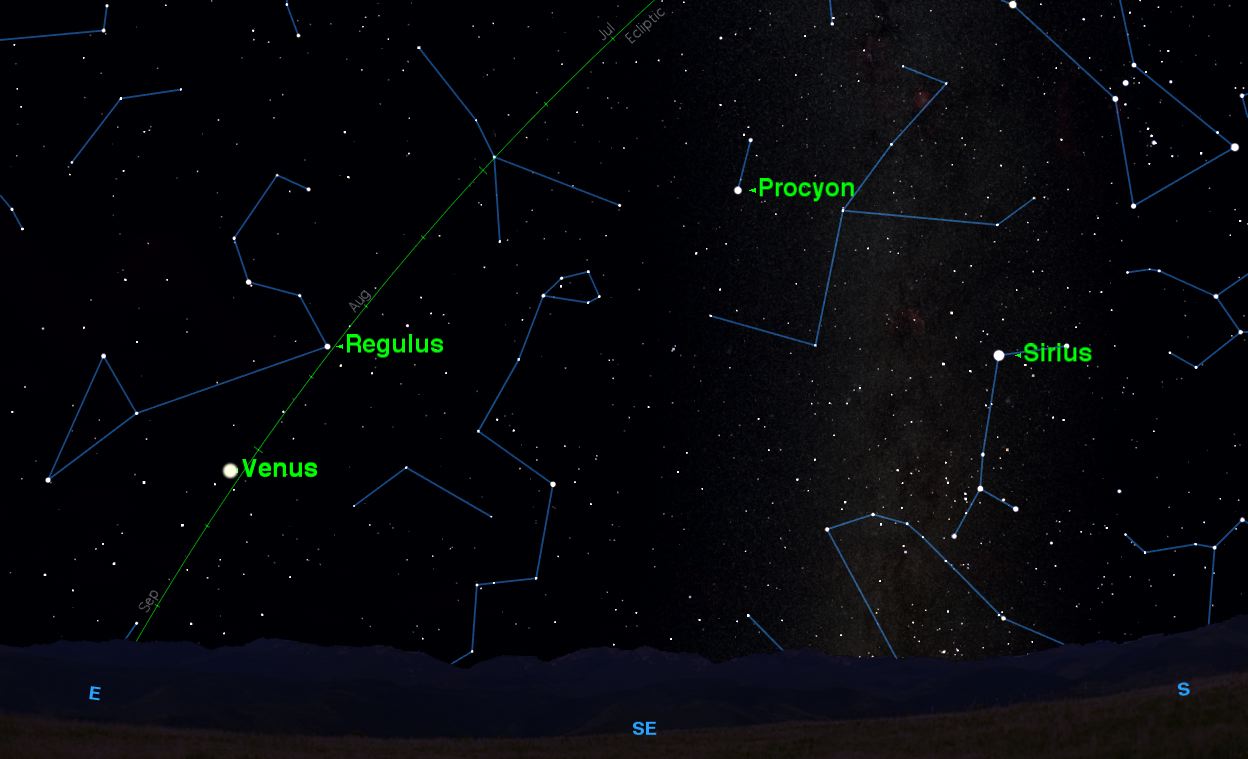Rare Celestial Sight: How to See the Zodiacal Light

What do the prophet Muhammad and Queen’s guitarist Brian May have in common? Look to the sky for the next two weeks for the answer: the zodiacal light.
The zodiacal light is a very rare astronomical phenomenon. It is important in Islam because Muhammad used it to describe the times of prayer. Rock guitarist Brian May of Queen, meanwhile, has a doctorate in astronomy for research into (you guessed it) the zodiacal light.
For the next couple of weeks, night sky observers will have an excellent opportunity to observe the zodiacal light.
We all know about the large bodies that make up the solar system: the sun, the planets and their moons, the asteroids and comets. But there is a lot of interplanetary matter which has never coalesced into large solid bodies.
This is mostly dust left over from the original nebula out of which the solar system formed, and it’s concentrated in the plane of the solar system, which is known as the ecliptic or zodiac.
At certain times of the year under certain conditions, this thin interplanetary dust can be seen with the naked eye, and the next two weeks present such an opportunity.
The first requirement for seeing the zodiacal light is an extremely dark sky. Its glow is much fainter than that of the Milky Way, so that, if you can’t see the Milky Way from your location, you can forget about seeing the zodiacal light.
Get the Space.com Newsletter
Breaking space news, the latest updates on rocket launches, skywatching events and more!
The second requirement is that there be no moon in the night sky. That’s why the next two weeks are so important: the moon will be close to the sun or in the evening sky, leaving the morning sky moonless.
The third requirement is that the ecliptic, the line in the sky where the sun, moon, and planets move, be at a high angle to the horizon. This happens in February and March in the western sky after dusk, and in September and October in the eastern sky before dawn.
The sky map guide associated with this story shows the eastern sky at 5 a.m. local time this week. The Milky Way appears as a ghostly glow of distant stars rising vertically from the east-southeast horizon, marked by the bright stars Sirius and Procyon.
To the Milky Way's left, rising from the eastern horizon at an angle, will be the fainter glow of the sun reflecting off countless particles of interplanetary dust — the zodiacal light. It will follow the path of the ecliptic, marked by Venus and Regulus.
You can tell the difference between the zodiacal light and the Milky Way by its position in the sky, by its shape (conical or triangular, rather than a strip of equal width), and by its faintness.
To improve your chances of seeing the zodiacal light, be sure to give your eyes at least 20 minutes to adapt to the darkness.
For observers in the Southern Hemisphere, the months for best observation are reversed: Dawn in February and March, dusk in September and October.
This article was provided to SPACE.com by Starry Night Education, the leader in space science curriculum solutions. Follow Starry Night on Twitter @StarryNightEdu.
Join our Space Forums to keep talking space on the latest missions, night sky and more! And if you have a news tip, correction or comment, let us know at: community@space.com.

Geoff Gaherty was Space.com's Night Sky columnist and in partnership with Starry Night software and a dedicated amateur astronomer who sought to share the wonders of the night sky with the world. Based in Canada, Geoff studied mathematics and physics at McGill University and earned a Ph.D. in anthropology from the University of Toronto, all while pursuing a passion for the night sky and serving as an astronomy communicator. He credited a partial solar eclipse observed in 1946 (at age 5) and his 1957 sighting of the Comet Arend-Roland as a teenager for sparking his interest in amateur astronomy. In 2008, Geoff won the Chant Medal from the Royal Astronomical Society of Canada, an award given to a Canadian amateur astronomer in recognition of their lifetime achievements. Sadly, Geoff passed away July 7, 2016 due to complications from a kidney transplant, but his legacy continues at Starry Night.










